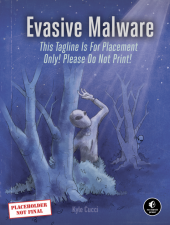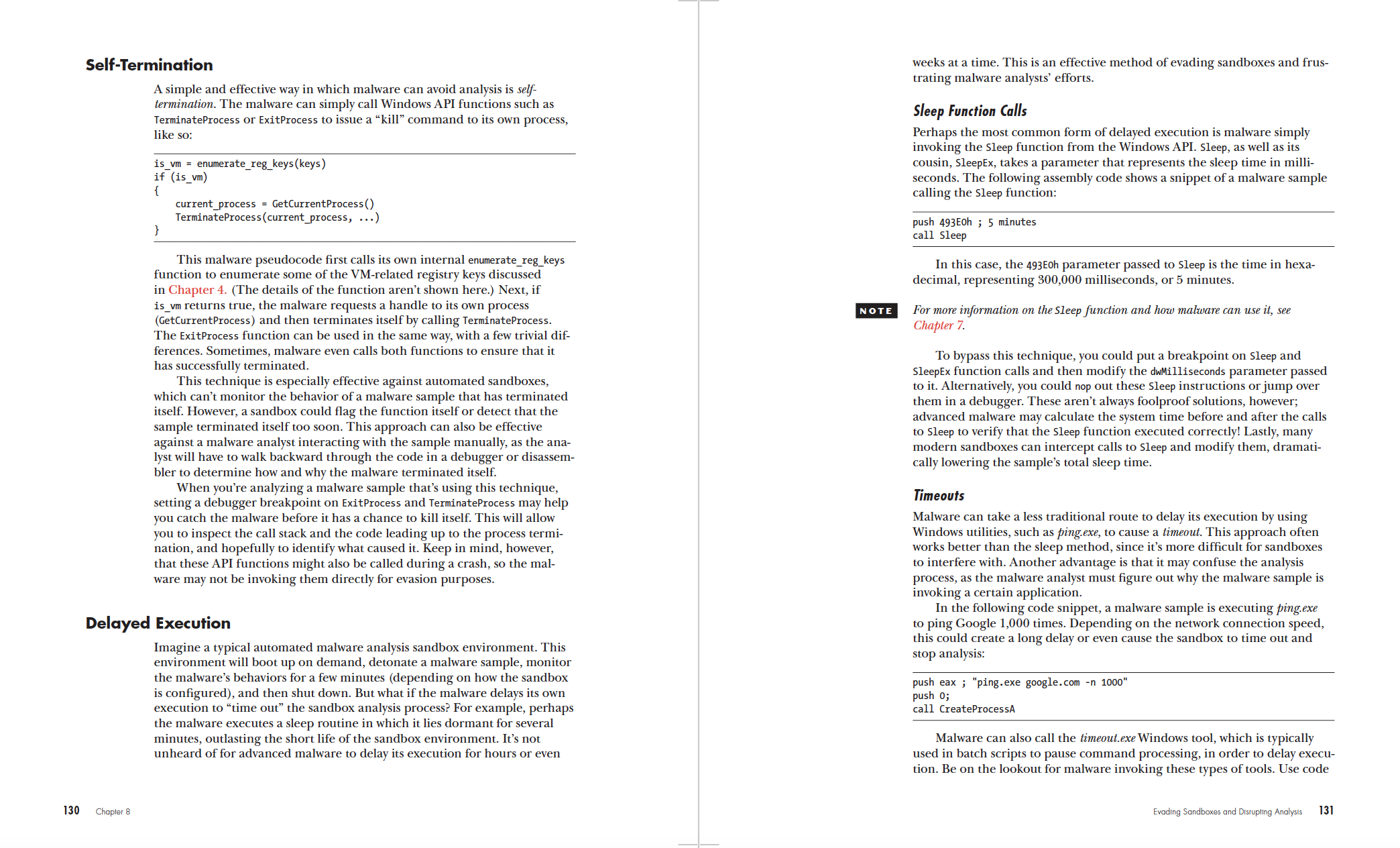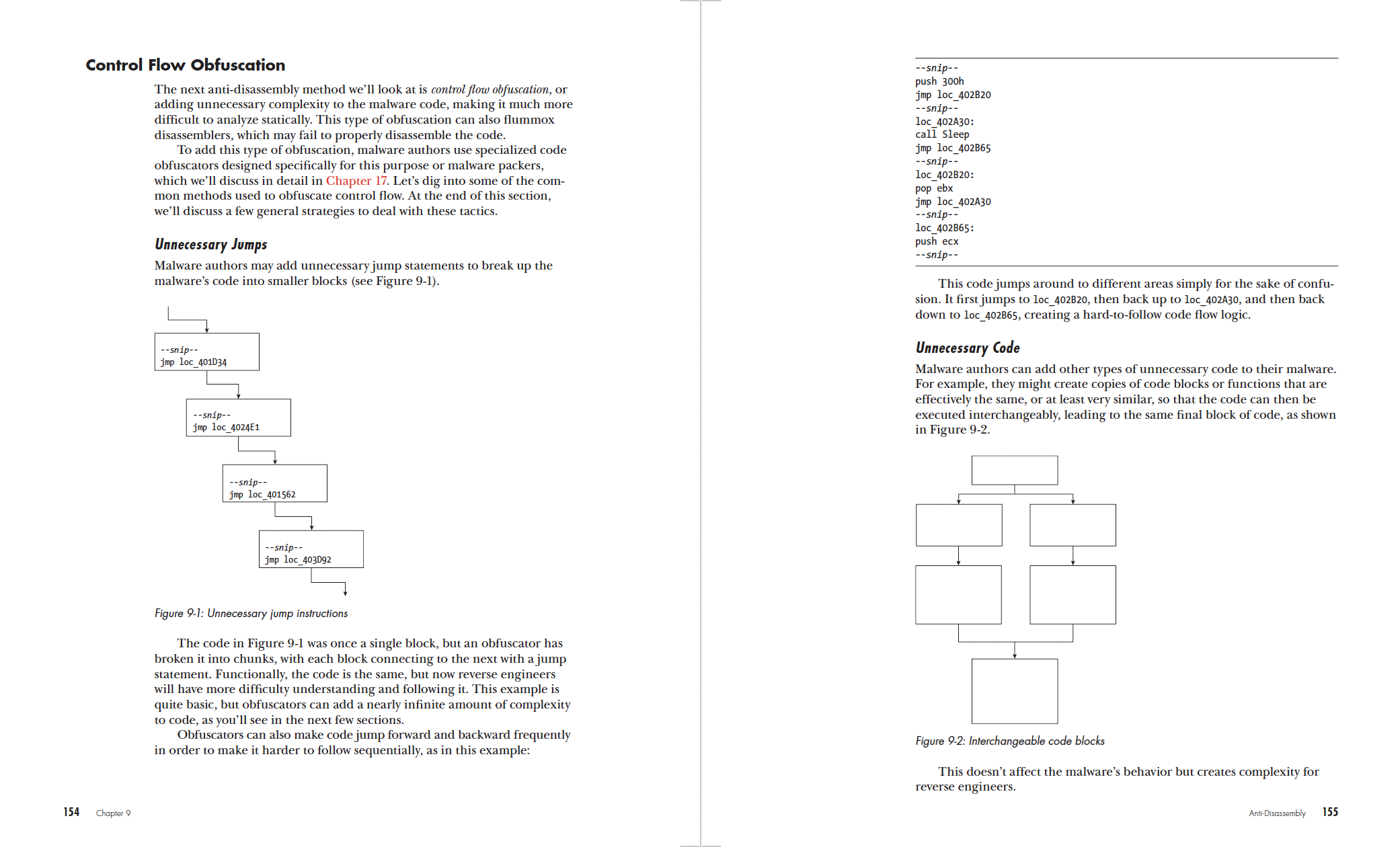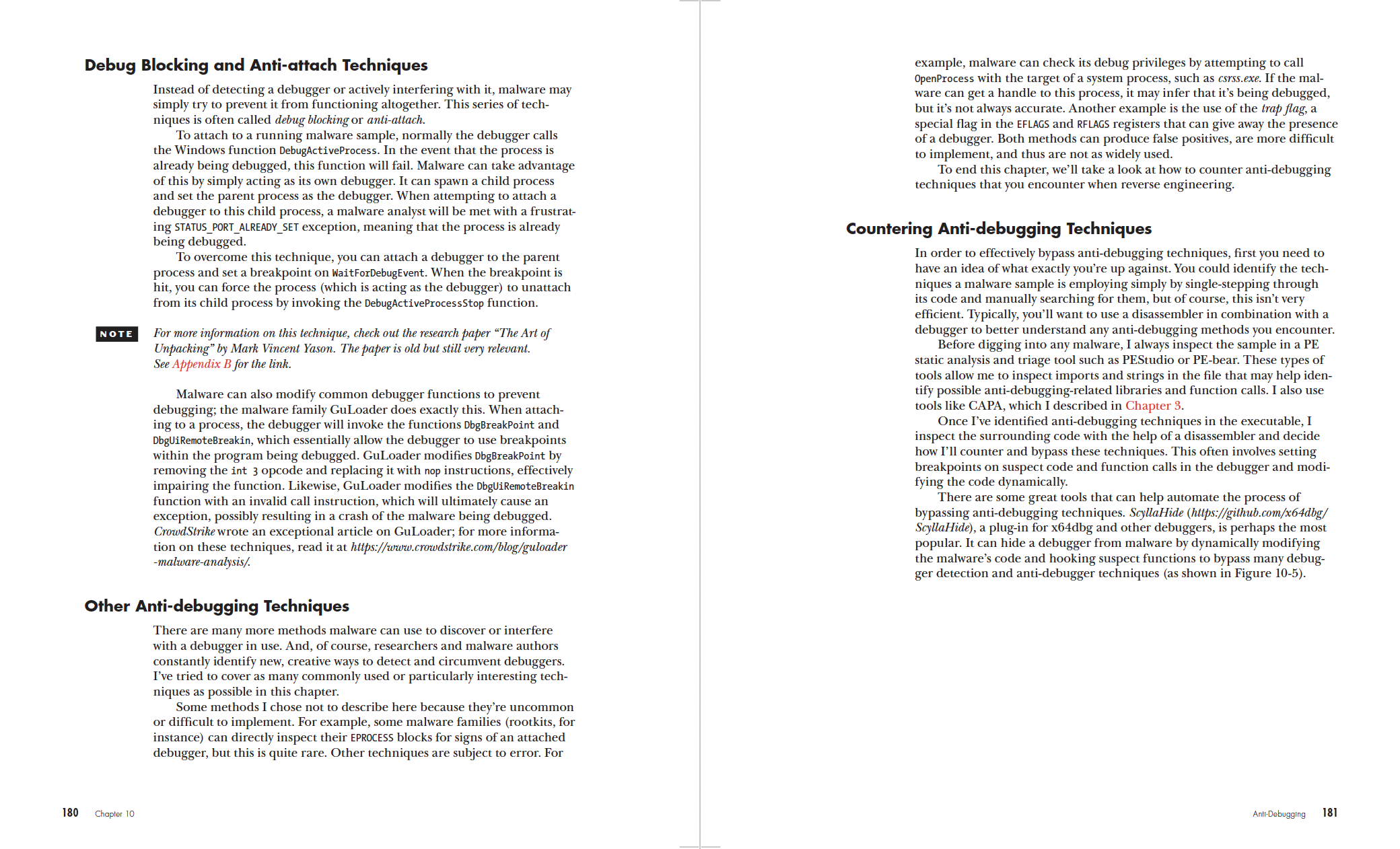Introduction
Part I: The Fundamentals
Chapter 1: Windows Foundational Concepts
Chapter 2: A Crash Course in Malware Triage and Behavioral Analysis
Chapter 3: A Crash Course in Static and Dynamic Code Analysis
Part II: Context Awareness and Sandbox Evasion
Chapter 4: Enumerating Operating System Artifacts
Chapter 5: User Environment and Interaction Detection
Chapter 6: Enumerating Hardware and Network Configurations
Chapter 7: Runtime Environment and Virtual Processor Anomalies
Chapter 8: Evading Sandboxes and Disrupting Analysis
Part III: Anti-reversing
Chapter 9: Anti-disassembly
Chapter 10: Anti-debugging
Chapter 11: Covert Code Execution and Misdirection
Part IV: Defense Evasion
Chapter 12: Process Injection, Manipulation, and Hooking
Chapter 13: Evading Network and Endpoint Defenses
Chapter 14: An Introduction to Rootkits
Chapter 15: Fileless Malware and Anti-forensics
Part V: Other Topics
Chapter 16: Encoding and Encryption
Chapter 17: Packers and Unpacking Malware
Chapter 18: Tips for Building an Anti-evasion Analysis Lab
Appendix A: Evasion-Related Windows API Functions
Appendix B: Windows LOLbins and Example Usage
Appendix C: Further Reading
The chapters in red are included in this Early Access PDF.





